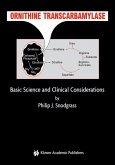Chemical and Synthetic Biology Approaches to Understand Cellular Functions - Part C, Volume 633, the latest release in the Methods in Enzymology series, continues the legacy of this premier serial. This release includes sections on Next generation probes for molecular imaging in cells, Competitive binding assay for biotin and biotin derivatives, based on avidin and biotin-4-fluorescein, Converting avidin to bind ligands other than biotin, especially steroids, Chemoenzymatic Labeling Strategy, Engineered Siderophores, Small molecules to inhibit bacterial population behavior, NMR tube bioreactor, Small molecule controlled RAS activation system, Small molecule regulated Cas9, the Design and application of synthetic receptors, and much more.
"Given that the preceding Parts A and B of this series were both published nearly a decade ago (i.e., 2011), Part C offers a timely overview of recent technological advances and novel findings in these rapidly moving areas of research and development. This most recent addition to the prestigious Methods in Enzymology series complements, rather than competes with, the numerous books available on these topics, which generally focus on either synthetic or chemical biology or specific aspects thereof (e.g., "Inorganic Chemical Biology" or "Systems Biology Application in Synthetic Biology"), but not both, and rarely offer the detailed descriptions of specific methods and procedures found in this book." --Doody








